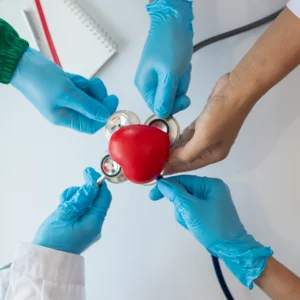Surgery Method Without Stopping the Heart



Normally, when we say open heart surgery, we think of surgeries that are performed by stopping the heart. This procedure is performed by the Heart-Lung Machine, pictured above. This machine takes all the blood in the body to a pump system and oxygenates the blood there, then pumps it back into the patient’s body. During this time, the surgeon performs the surgery on the heart.
This device, which was discovered in the 1950s and revolutionized heart surgery, has been used successfully for years. The machine is built on various pumps and plastic pipe systems, which are not physiological (i.e. suitable for body structure). In particular, the damage that the blood suffers while passing through this system, low blood pressure during surgery, potential complications that may occur while wearing the machine, disruption of the clotting mechanism, etc., cause many organs to be damaged to various degrees. This has been researched in the heart surgery literature for years, and the damage that the machine causes to the body is tried to be reduced with various measures.
In order to reduce these damages, the concept called “off-pump surgery” has been adopted, that is, surgeries performed without a pump (without a Heart-Lung Machine) and without stopping the heart have become increasingly popular among surgeons. The reason for this method is not just a “fashion”. In particular, due to other discoveries in medicine, the average age is increasing day by day and heart surgery patients are entering the group we call more risky, that is, they have to undergo surgery together with various diseases (peripheral artery disease, diabetes, chronic obstructive pulmonary disease, kidney failure, etc.). In such elderly patients whose veins have lost their elasticity, the damage that the Heart-Lung Machine can cause is more apparent, because the body’s capacity to compensate is low. For the reasons explained, not using the Heart-Lung Machine during bypass surgery is in line with the term “minimally invasive” (as mentioned above).
Only bypass surgeries can be performed with this method, valve surgeries do not yet seem possible, but the first experimental studies have been initiated. The aim of bypass surgery is to bridge the blocked vein with a vein taken from another part of the body (picture on the right). During bypass surgery on a beating heart, the heart is positioned according to the vein to be bypassed and the movement of the surface where the vein will be attached is restricted with various methods/instruments. While the heart continues to beat, the movement of the surgical area is restricted and veins taken from the ribcage, leg or arm are stitched to the heart veins.
The biggest advantage of the method is that it completely eliminates all potential damage that the Heart Lung Machine can cause to the body. The heart is not stopped during surgery. This reduces the risk of surgery, especially in people who have had a recent attack. It has been published that death, stroke, lung and kidney failure are less common than normal open heart surgery.

